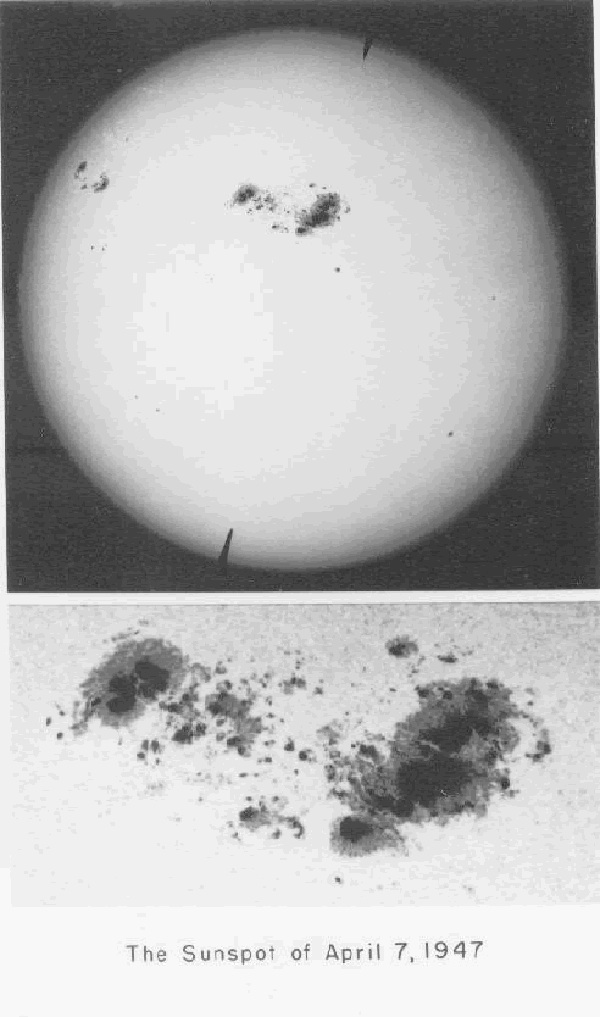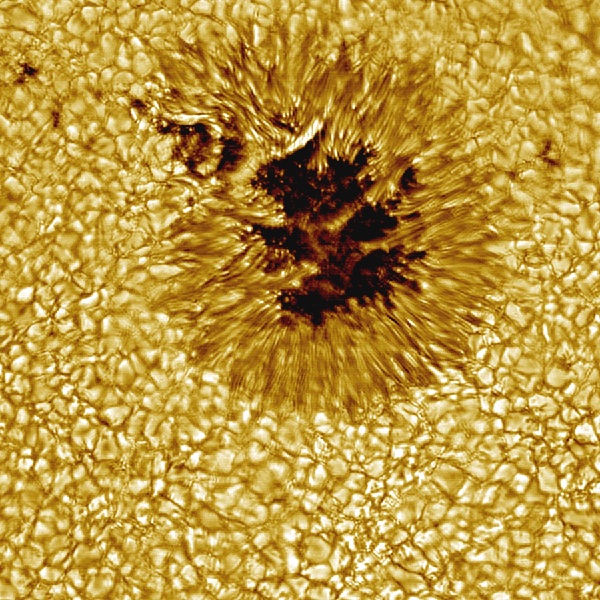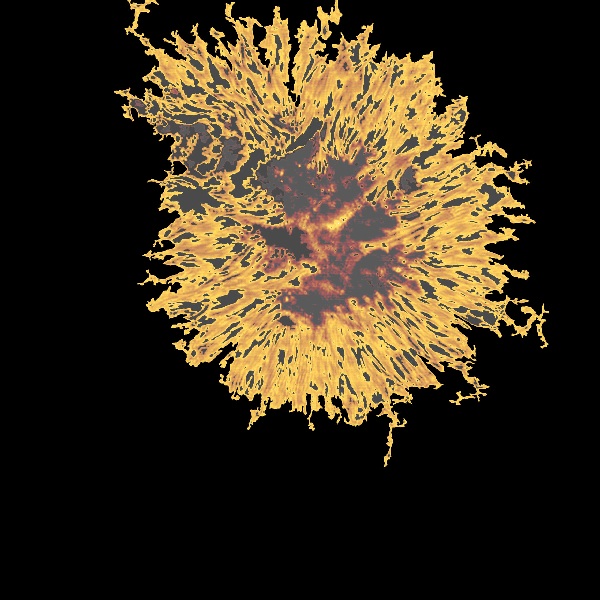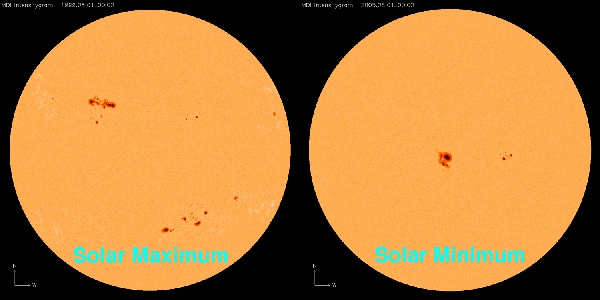Sunspots
The Sun is a constantly changing star. At its surface, it is driven by magnetism. Sunspots are areas of intense magnetic activity—almost like storms—on the Sun. The Sun goes through an 11-year cycle with lots of sunspots at the peak, and hardly any sunspots at the low point of the cycle. Often, sunspots form in pairs, one with a positive-type polarity, and one with a negative-type polarity. They typically last several days, but larger sunspots can last for several weeks.
VISUAL 8 (still): The Great Sunspot of April 7, 1947 (top photos)
[Show an image of the Great Sunspot, as observed on April 7th, 1947.]

The largest one ever recorded was observed in March and April of 1947. It covered an area of about 7 billion square kilometers. About 18 Earths would be able to fit inside of this area. Although most sunspots are not this big, most of them are larger than Earth.
But why are sunspots dark?
In reality, sunspots themselves are not dark.
VISUAL 9 (still): Sunspot on Sun (center) [Show a close-up image of a sunspot on the Sun.]

VISUAL 10 (still): Sunspot “Alone” in Space [Show the same sunspot as it might appear if it were stripped from the Sun. This is meant to illustrate that sunspots only appear to be dark when compared to the brilliance of the rest of the Sun. Then hide the image.]

If you could somehow strip away a sunspot from the Sun and put it by itself in the sky, you would see it as a bright orange gas—maybe as bright as a full moon. It only appears dark relative to its surroundings. These magnetic storms prevent some heat from the Sun’s core from getting to the surface. So they become cooler and are less bright. Sunspots are about 2000 degrees cooler than the rest of the solar surface which is about 6000 degrees Celsius (11,000 degrees Farenheit).
VISUAL 11 (still): Sun at Max and at Min
[Show an image comparing the Sun at maximum activity and minimum activity.]

The number of sunspots is related to how active the Sun is. When there are more sunspots, there are more flares, more eruptions, and more bursts from the Sun. There is also some evidence that solar activity can have a dramatic effect on the Earth. For example, in the 1600s and 1700s, there was a great reduction in the number of sunspots, which may correlate to unusually cold temperatures on the Earth around the same time.
[Fade off the images of the Sun.]

